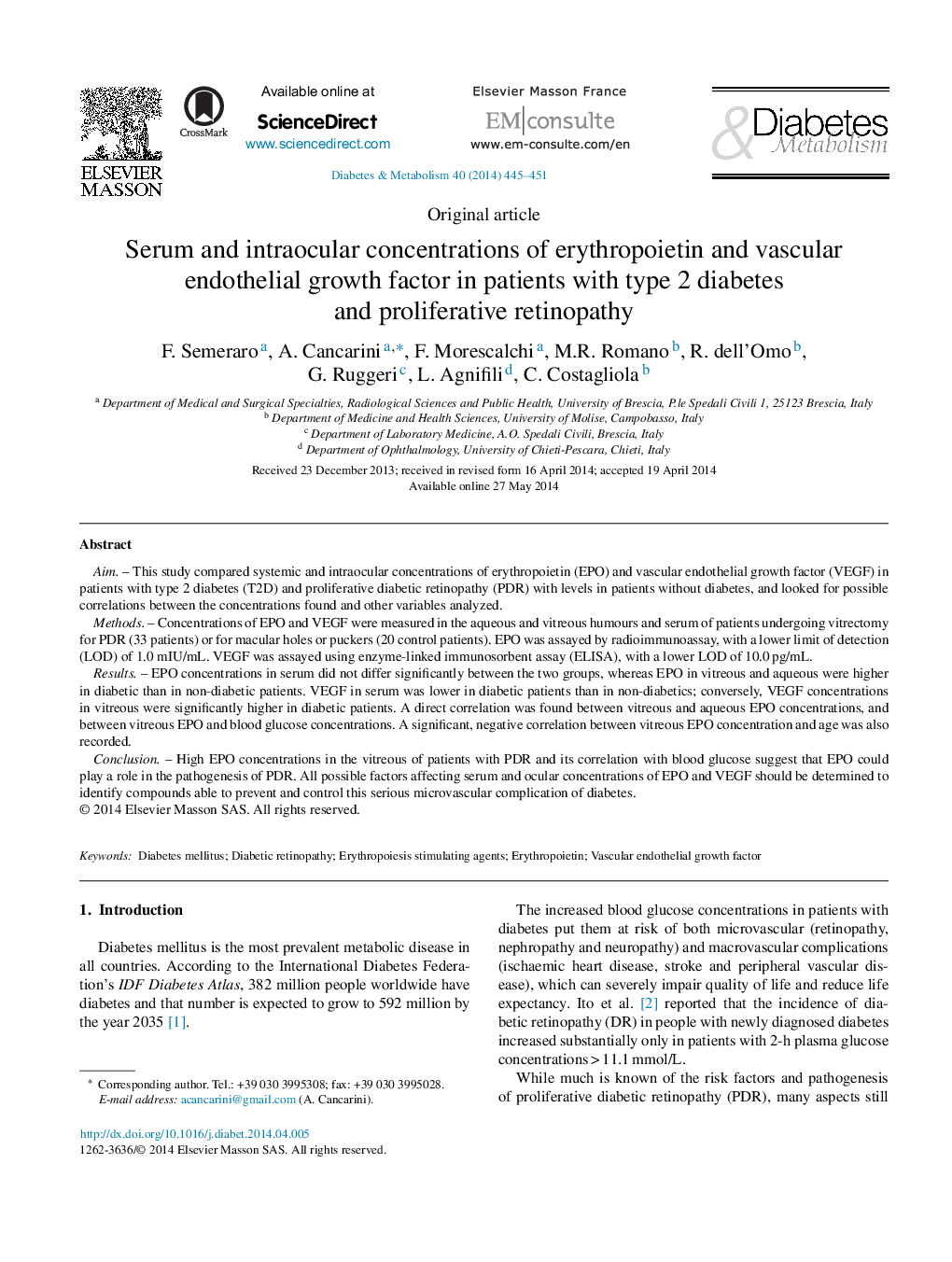| Article ID | Journal | Published Year | Pages | File Type |
|---|---|---|---|---|
| 6087903 | Diabetes & Metabolism | 2014 | 7 Pages |
AimThis study compared systemic and intraocular concentrations of erythropoietin (EPO) and vascular endothelial growth factor (VEGF) in patients with type 2 diabetes (T2D) and proliferative diabetic retinopathy (PDR) with levels in patients without diabetes, and looked for possible correlations between the concentrations found and other variables analyzed.MethodsConcentrations of EPO and VEGF were measured in the aqueous and vitreous humours and serum of patients undergoing vitrectomy for PDR (33 patients) or for macular holes or puckers (20 control patients). EPO was assayed by radioimmunoassay, with a lower limit of detection (LOD) of 1.0 mIU/mL. VEGF was assayed using enzyme-linked immunosorbent assay (ELISA), with a lower LOD of 10.0Â pg/mL.ResultsEPO concentrations in serum did not differ significantly between the two groups, whereas EPO in vitreous and aqueous were higher in diabetic than in non-diabetic patients. VEGF in serum was lower in diabetic patients than in non-diabetics; conversely, VEGF concentrations in vitreous were significantly higher in diabetic patients. A direct correlation was found between vitreous and aqueous EPO concentrations, and between vitreous EPO and blood glucose concentrations. A significant, negative correlation between vitreous EPO concentration and age was also recorded.ConclusionHigh EPO concentrations in the vitreous of patients with PDR and its correlation with blood glucose suggest that EPO could play a role in the pathogenesis of PDR. All possible factors affecting serum and ocular concentrations of EPO and VEGF should be determined to identify compounds able to prevent and control this serious microvascular complication of diabetes.
